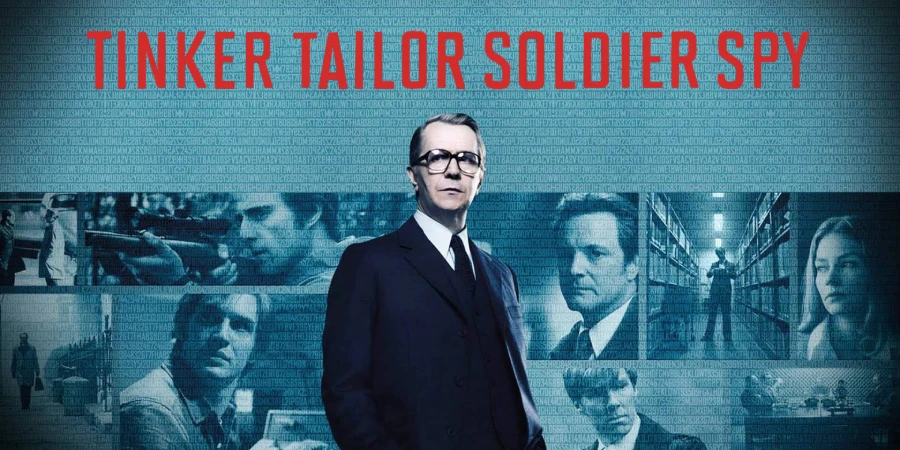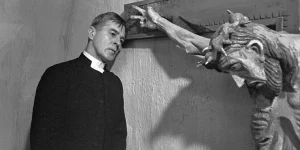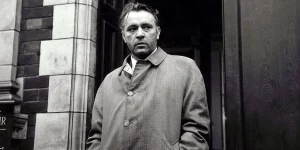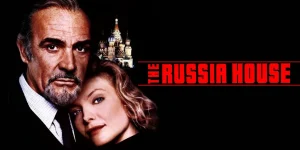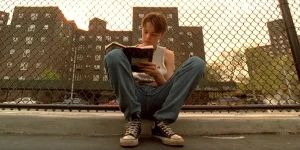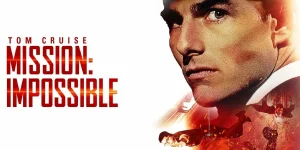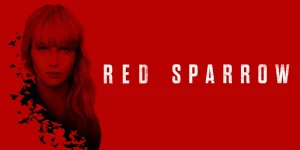Tinker Tailor Soldier Spy is a dense, atmospheric espionage thriller directed by Tomas Alfredson, based on the classic 1974 novel by John le Carré. With its muted color palette, cold-war paranoia, and slow-burn storytelling, the film delves into the shadowy world of British intelligence during the 1970s. It’s a puzzle box of lies, double agents, and subtle betrayals—perfect for viewers who appreciate smart, complex narratives.
Table of Contents
ToggleDetailed Summary
Introduction: A Botched Operation and a Fall from Grace
The film opens with a secret operation gone wrong in Budapest. British agent Jim Prideaux (Mark Strong) is shot and captured, triggering a chain of events that destabilizes the British Secret Intelligence Service—referred to as “the Circus.” Control (John Hurt), the head of the Circus, is forced to resign along with his loyal deputy, George Smiley (Gary Oldman). Control had suspected a high-level Soviet mole within the organization and narrowed the suspects to five senior officers: “Tinker” (Percy Alleline), “Tailor” (Bill Haydon), “Soldier” (Roy Bland), “Poor Man” (Toby Esterhase), and “Beggarman” (Smiley himself).
Smiley’s Quiet Return
After Control’s death and increasing concern about Soviet infiltration, Smiley is brought out of retirement to investigate the mole theory unofficially. With the help of Peter Guillam (Benedict Cumberbatch) and field agent Ricki Tarr (Tom Hardy), he begins to piece together the fractured truth behind the Circus’s operations and Control’s suspicions.
Ricki Tarr’s Testimony
Tarr’s story is a pivotal turning point. He fell in love with Irina, a Russian agent, who claimed to know the identity of the mole. Her attempt to defect led to her capture, and Tarr went into hiding. His intelligence reawakens the dormant theory of a mole, pushing Smiley to dig deeper.
Operation Witchcraft
Alleline, now head of the Circus, has been running a highly classified intelligence-sharing operation with the Soviets called “Witchcraft.” Smiley suspects that this operation is being manipulated by Moscow Centre (the Soviets) and that the mole is feeding fake intel in exchange for minor truths to build credibility.
Flashbacks and Hidden Connections
Through meticulous interrogation and cross-referencing memories, Smiley uncovers secrets—including a past romantic affair between Haydon and Smiley’s wife, Anne. Jim Prideaux, having returned to England after being tortured, is teaching at a school and harboring his own traumas from the betrayal. All these pieces of the puzzle begin aligning toward one inevitable truth.
Movie Ending
Smiley’s investigation leads him to confirm that the mole is Bill Haydon (Colin Firth)—“Tailor.” Haydon had been working for Karla, the enigmatic Soviet spymaster, for years. Haydon’s betrayal wasn’t just professional; it was deeply personal. He had seduced Smiley’s wife, likely as part of his efforts to destabilize the man who might uncover him.
Haydon is captured quietly, and Smiley arranges for Jim Prideaux to visit him before he is traded back to the Soviets. In one of the film’s most powerful moments, it is implied that Prideaux—who had once been close friends with Haydon, possibly more—kills him for the betrayal. The final scenes show Smiley reinstated as head of the Circus, returning the service to a sense of order and stability, albeit with the haunting cost of betrayal and broken relationships weighing heavy.
Are There Post-Credits Scenes?
No, Tinker Tailor Soldier Spy does not have any post-credits scenes. Once the credits roll, the story is considered complete, with no Marvel-style teasers or epilogues. The final fade-out underscores the film’s sober tone—no gimmicks, just the lingering chill of espionage.
Type of Movie
The film is a spy thriller, more specifically a Cold War espionage drama. It’s slow-paced, cerebral, and intentionally opaque, relying more on character nuance and atmosphere than action or explosions.
Cast
- Gary Oldman as George Smiley
- Colin Firth as Bill Haydon
- Tom Hardy as Ricki Tarr
- Mark Strong as Jim Prideaux
- Benedict Cumberbatch as Peter Guillam
- John Hurt as Control
- Toby Jones as Percy Alleline
- Ciarán Hinds as Roy Bland
- David Dencik as Toby Esterhase
- Kathy Burke as Connie Sachs
Film Music and Composer
The music was composed by Alberto Iglesias, whose score perfectly captures the film’s tension, melancholy, and retro espionage vibe. Sparse and moody, the music enhances the slow, methodical pacing. The closing credits feature Julio Iglesias’ version of “La Mer,” which hauntingly underlines the film’s emotional weight.
Filming Locations
The movie was filmed across several European locations:
- London, UK – The bulk of the film was shot here, particularly in areas evoking a drab 1970s aesthetic to reflect the mood of Cold War Britain.
- Budapest, Hungary – Used for the opening operation scene, lending a gritty and authentic Eastern European backdrop.
- Istanbul, Turkey – Some scenes were shot here, emphasizing the global scope of espionage.
The settings are integral in reinforcing the sense of paranoia and secrecy. Each location mirrors the shadowy nature of the story’s espionage.
Awards and Nominations
Tinker Tailor Soldier Spy received widespread critical acclaim and several prestigious nominations:
- 3 Academy Award nominations (Best Actor for Gary Oldman, Best Adapted Screenplay, Best Original Score)
- 2 BAFTA Awards (Best British Film, Best Adapted Screenplay)
- Venice Film Festival – Won Best Actor (Gary Oldman) at some international festivals
- European Film Awards – Best Production Designer
Behind the Scenes Insights
- Gary Oldman based his portrayal of Smiley on Alec Guinness, who famously played the character in the 1979 TV miniseries.
- Tomas Alfredson had never directed an English-language film before this; he gained acclaim for Let the Right One In.
- The production design team reportedly “aged” all costumes and sets to achieve the worn-down, bleak 1970s look.
- The film uses muted tones and color grading to reflect both Cold War bleakness and emotional detachment.
- The ensemble cast spent weeks in rehearsals discussing character backgrounds and relationships not shown on screen.
Inspirations and References
The film is adapted from the 1974 novel “Tinker Tailor Soldier Spy” by John le Carré, which itself was influenced by real Cold War events—especially the Cambridge Five, a ring of Soviet spies inside British intelligence. The novel’s tone and themes are informed by le Carré’s own experiences in MI6.
Alternate Endings and Deleted Scenes
The theatrical ending was consistent with the book’s tone, but several deleted scenes were trimmed for pacing. Notable omitted material includes:
- A deeper dive into Smiley’s marriage and his emotional response to Anne’s betrayal.
- A longer flashback to Prideaux and Haydon’s relationship at Oxford, hinting more directly at romantic undertones.
- Some versions include an extended epilogue where Smiley begins reorganizing the Circus.
No alternate endings were publicly discussed, but the deletions focused mainly on trimming character backstories.
Book Adaptations and Differences
Compared to the book:
- The film compresses many plot points and combines characters for brevity.
- Smiley is more emotionally detached in the film; the novel provides deeper internal monologues.
- Some backstory (like Haydon’s motivations and past relationships) is more nuanced in the book.
- The character of Jerry Westerby is entirely omitted from the film.
Despite these, the adaptation is considered one of the most faithful screen versions of le Carré’s work.
Memorable Scenes and Quotes
Key Scenes
- Smiley’s Monologue about Karla: A quiet yet riveting moment where Smiley recounts his only encounter with the Soviet spymaster.
- Guillam Stealing the File: Tense and suspenseful, with no music—just nerves and surveillance.
- Reunion of Prideaux and Haydon: Their emotional and ambiguous final confrontation speaks volumes with no words.
- Haydon’s Arrest: Understated yet chilling, with everyone pretending it’s just another meeting.
Iconic Quotes
- “The secret is out there. It’s only a matter of discovering it.”
- “It’s the oldest question of all, George. Who can spy on the spies?”
- “We’re not so different, you and I. We both spend our days living someone else’s lies.”
Easter Eggs and Hidden Details
- The codenames “Tinker,” “Tailor,” etc., come from an old English nursery rhyme, hinting at how espionage reduces identities to archetypes.
- Smiley’s glasses were modeled after the ones worn by author John le Carré himself.
- In a brief office scene, a photo of Alec Guinness (the former Smiley) can be spotted on a desk.
Trivia
- This was Gary Oldman’s first Academy Award nomination.
- John le Carré has a cameo at the Christmas party scene.
- The film’s original runtime was over 3 hours, but it was edited down to just over 2 hours.
- The screenplay was written by Bridget O’Connor and Peter Straughan, who are also known for The Men Who Stare at Goats.
Why Watch?
Watch Tinker Tailor Soldier Spy if you’re in the mood for a meticulously crafted, intellectually demanding spy film that respects your intelligence. It’s ideal for fans of quiet tension, character-driven mysteries, and Cold War intrigue. There are no flashy car chases or explosions—just slow-burning suspense and psychological depth.
Director’s Other Movies
- Let the Right One In (2008)
- The Snowman (2017)
Recommended Films for Fans
- The Spy Who Came in from the Cold (1965)
- Bridge of Spies (2015)
- The Ghost Writer (2010)
- The Russia House (1990)
- Munich (2005)
- The Lives of Others (2006)
- The Constant Gardener (2005)
- A Most Wanted Man (2014)

